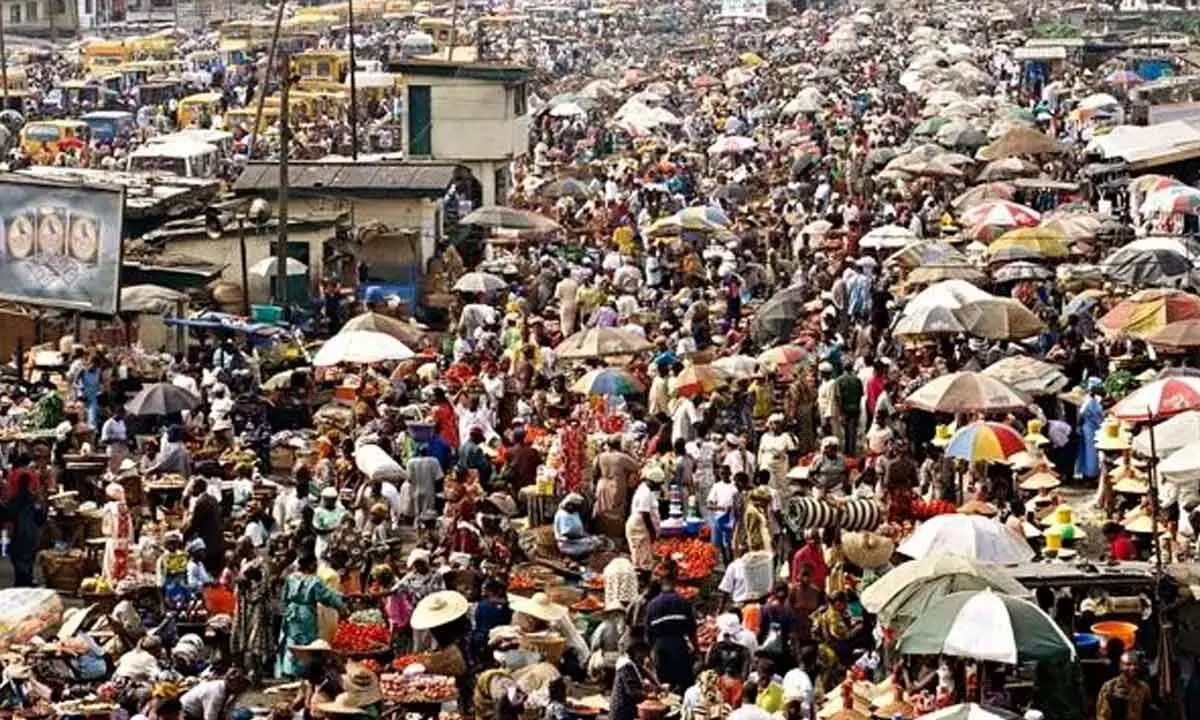Extreme population inequalities & inflation

During the pandemic, there have been several layoffs across the country as a part of cost-cutting.
During the pandemic, there have been several layoffs across the country as a part of cost-cutting. The remaining received half of their salaries. Post the third wave, when the normalcy drew in, most of them felt the crunch of "starting all over again", "starting back from zero", and "starting from the ground level" – these have been the real phrases by real people.
For instance, it is predicted that Indian households in 2025 will be 1.6 crore elite (more than Rs.25 lakhs/year), 3.3 crore affluent (Rs.12 to Rs.25 lakhs a year), 6.1 crore aspirers (Rs.6 to Rs.12 lakhs a year), 14 crore next billion (Rs.2 to Rs.6 lakhs a year), and 5.5 crore strugglers (less than Rs.2 lakhs a year) (Statista). The numbers have increased since 2016 meaning the rich have gotten richer and the poor poorer. However, in 2025 an upsurge in the "next billion" and a reduction in "strugglers" may be noted.
We need to understand the increasing distances in the inequalities in population created forcefully by the pandemic. Consequently, due to job loss, domestic pressures, and mental and physical health, 15 - 19.9 crore Indians have been pushed into poverty (Ram and Yadav, 2021).
The Strugglers
A report stated that 23 crore Indians were pushed into poverty by 2021. Fast forward to 2022, just a year later there is inflation. Moreover, economists suggest a recession by the end of Q4 2022 and 2023. The annual inflation rate in India in June 2022 was 7.01 percent (MSPI). However, before the pandemic, 8 crore Indians lived below the poverty line.
The rise in prices during inflation is due to the rise in demand or a shortage of supply that fails to meet the demand. But, demand arises from those who have the ability and willingness to do so. Would the "strugglers" demand anything more than their necessities during soaring high prices? Why do they face the wrath of inflation? The rise in the prices of necessities robs poor households. Inflation is due to a rise in the prices of food, spices, vegetables, and oil and fats. Prices of necessities have also risen such as education by 4.51 per cent, transport and communication by 6.9 per cent, and health by 5.47 per cent as of June 2022 as per the MSPI.
The Next Billion and Aspirers
The 35 crores middle-class population has shrunk and the number of poor people has increased (Pew Research Centre, 2021). The young population has dry savings, and high dependency proved by 45 per cent of households being unemployed and the requirement for jobs of around Rs. 2 lakh a year to 1.6 crore middle-class households (CMIE). The imbalance in prices of necessities and luxury/non-daily-use commodities leaves a burden on these households.
The Elite and Affluent
Who can solve the lack of demand recovery causing inflationary pressures and a future recession? While the middle class were pushed into poverty, parallelly percentage of "ultra-rich" Indians increased at 11 per cent. A March 2022 report suggests that between 2018 and 2022 India has produced 70 new millionaires and 145 billionaires. The top 10 per cent holds 77 per cent of the country's national wealth (Oxfam International).
Now, "Why do the rich get richer and the poor get poorer?" There are four ways to personal finance: income, expenses, assets and liabilities (Spero Financial). The "next billion" have high expenses due to the high prices, a low scope of investments, and a comfortable living that overrides all other investment opportunities. For instance, a 'next billion' or 'struggler' may invest in a safe home for his family. For which, a loan may or may not be considered. The interest (if any), taxes, bills, and other expenses increase. Additionally, the economic crisis may lead to policy changes. This keeps spiralling with EMI on the "comfort" in the home. Do these extreme inequalities turn an investment into an asset for the 'elite/affluent' and a liability for the others? In such extreme inequalities, a generalised policy may not be a solution for all—especially for a growing economic crisis.
What can be done?
India's sentiments have changed after the pandemic. After petrol and diesel prices slash in May 2022 an Ola driver told that fuel prices made them quit their jobs and join fixed-income jobs (YourStory). However, continuing as daily wage earner makes them an "aspirer" or "next billion".
To conclude, due to these extreme inequalities specific measures may help to cater to these income groups and the rising unemployment. The young population had trouble getting jobs, savings drying up increasing prices and bills, and the dependency increased on the older and the younger and vice-versa. Demand recovery can be possible through employment and income stability. With this, a probable recession can be aided. Limiting bank withdrawals, and decreasing interests in education, medical, and agriculture loans can help in avoiding pressures on loans taken for necessities or mainly borne by the lower strata of the population. Therefore, understanding these inequalities may help in curbing the probable economic crisis.
(The authors are a PhD Scholar at IBS Hyderabad and co-founder of Byrut Business Solutions LLP and an entrepreneur respectively)

